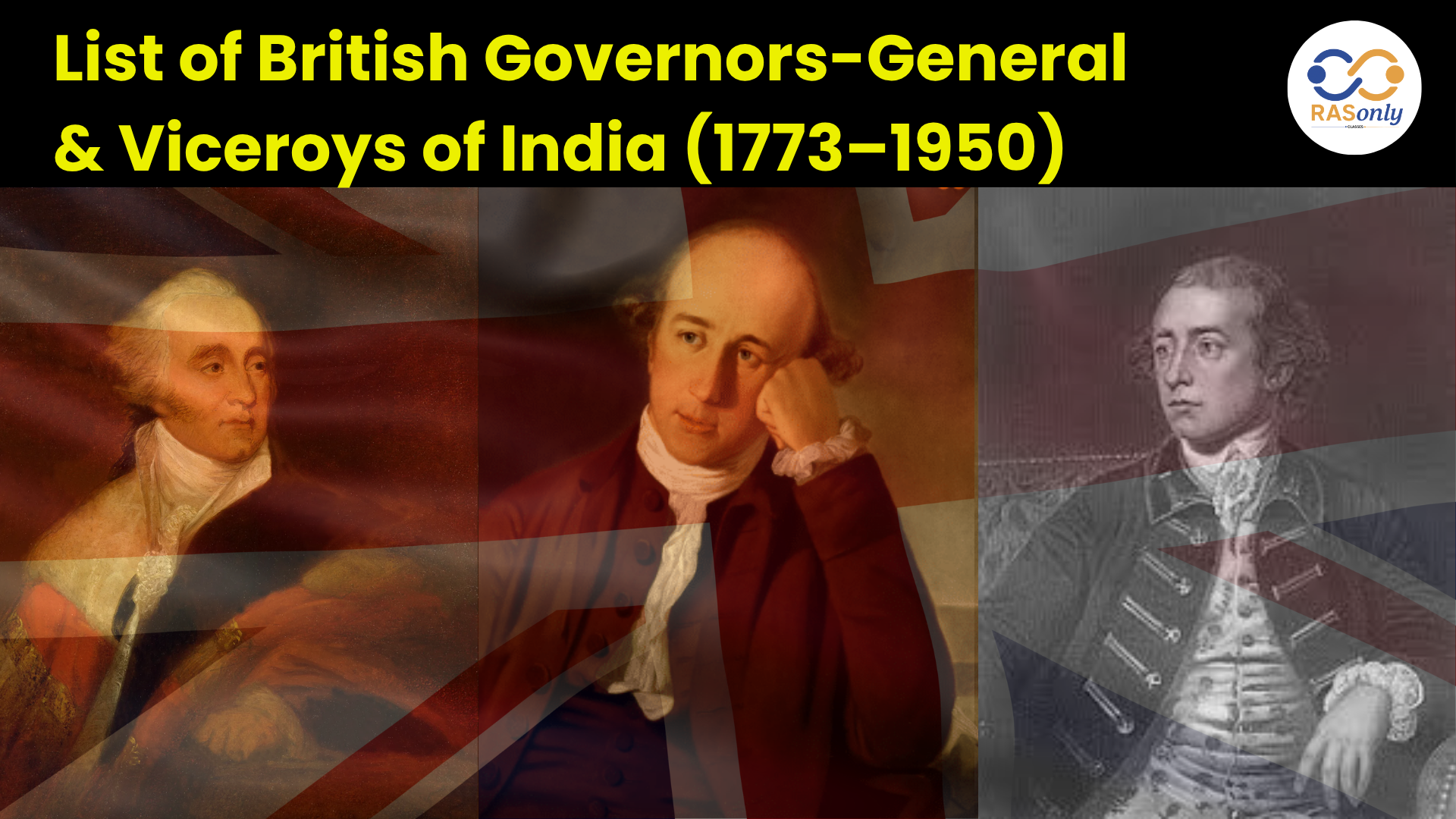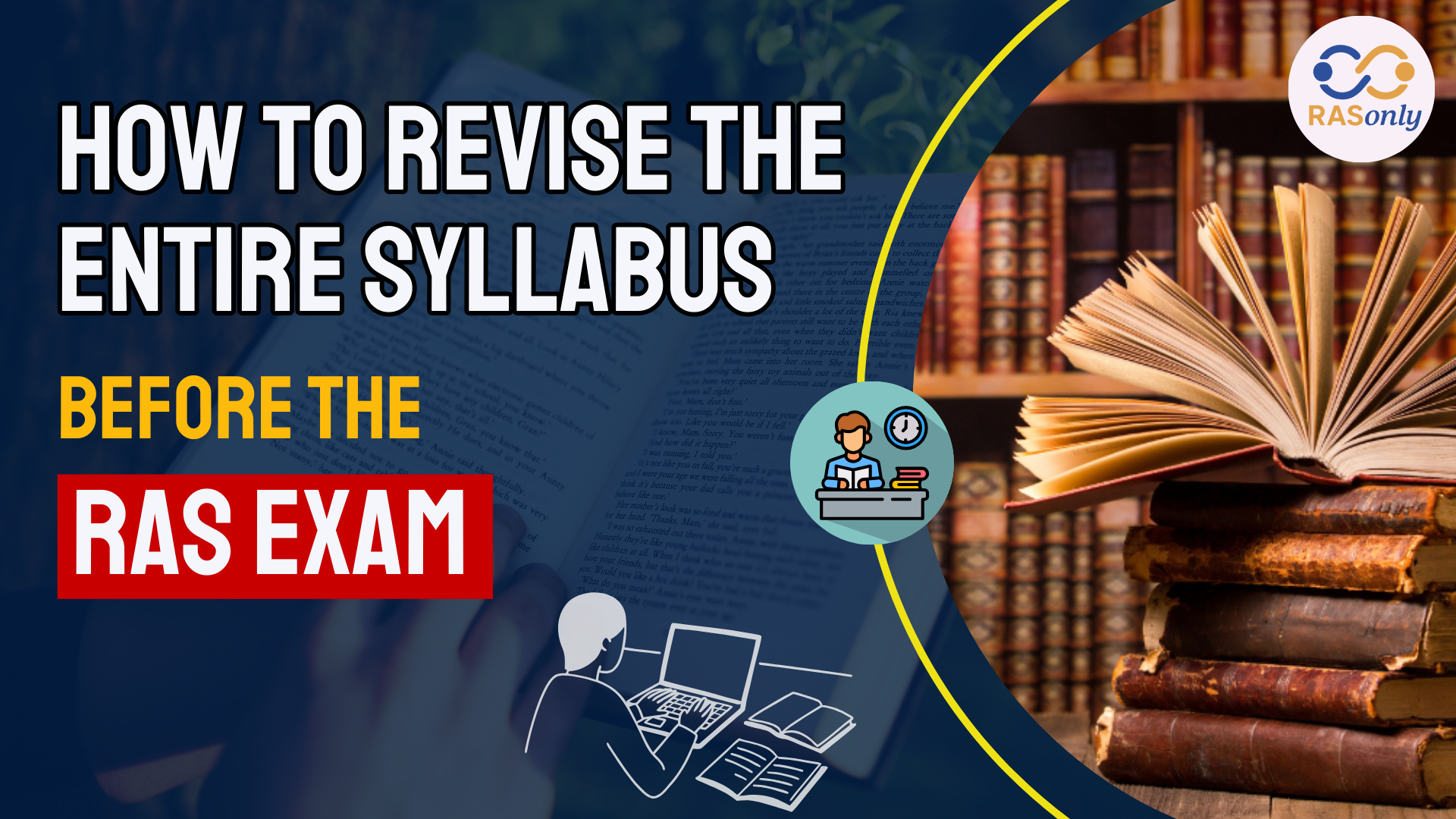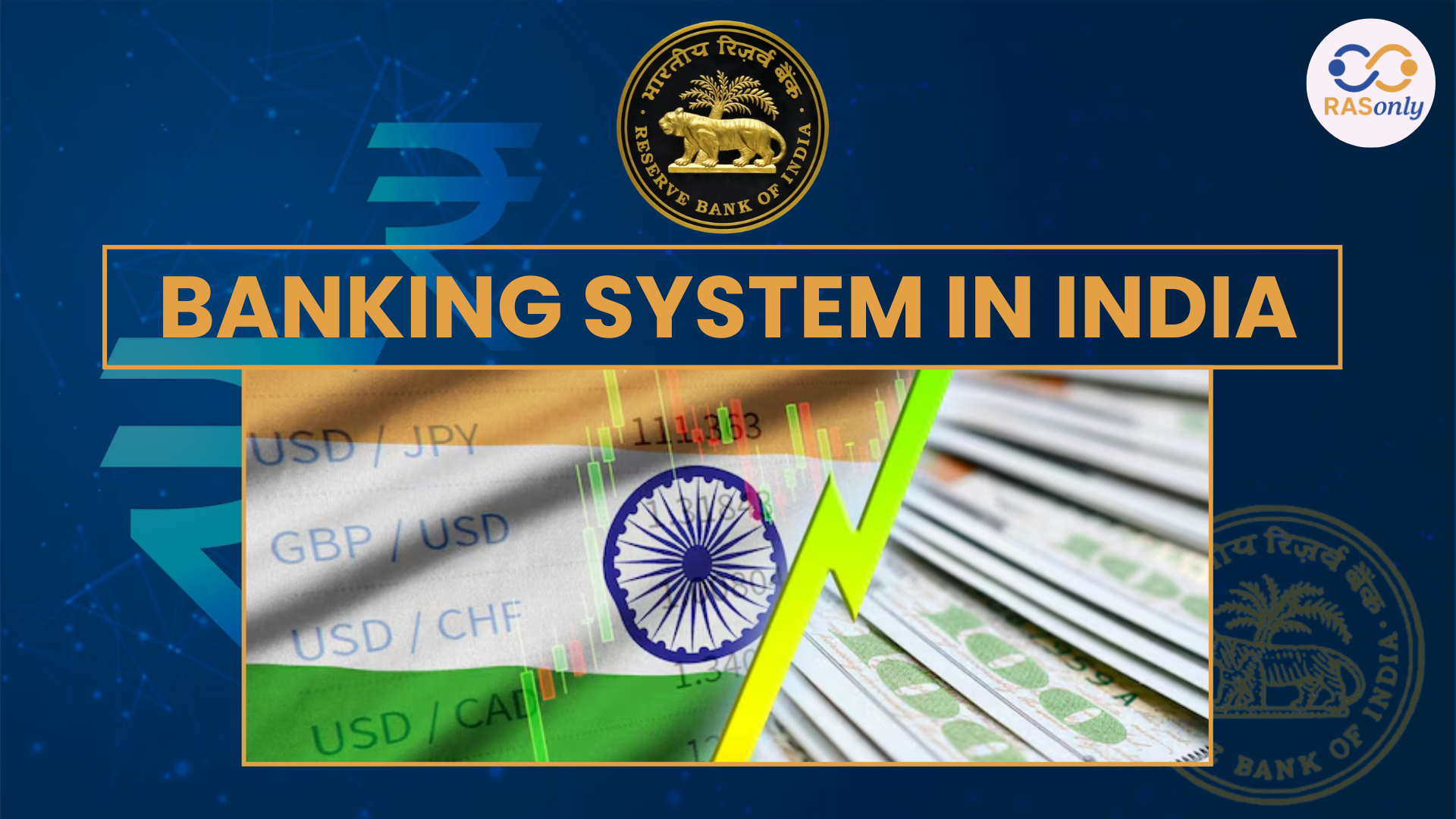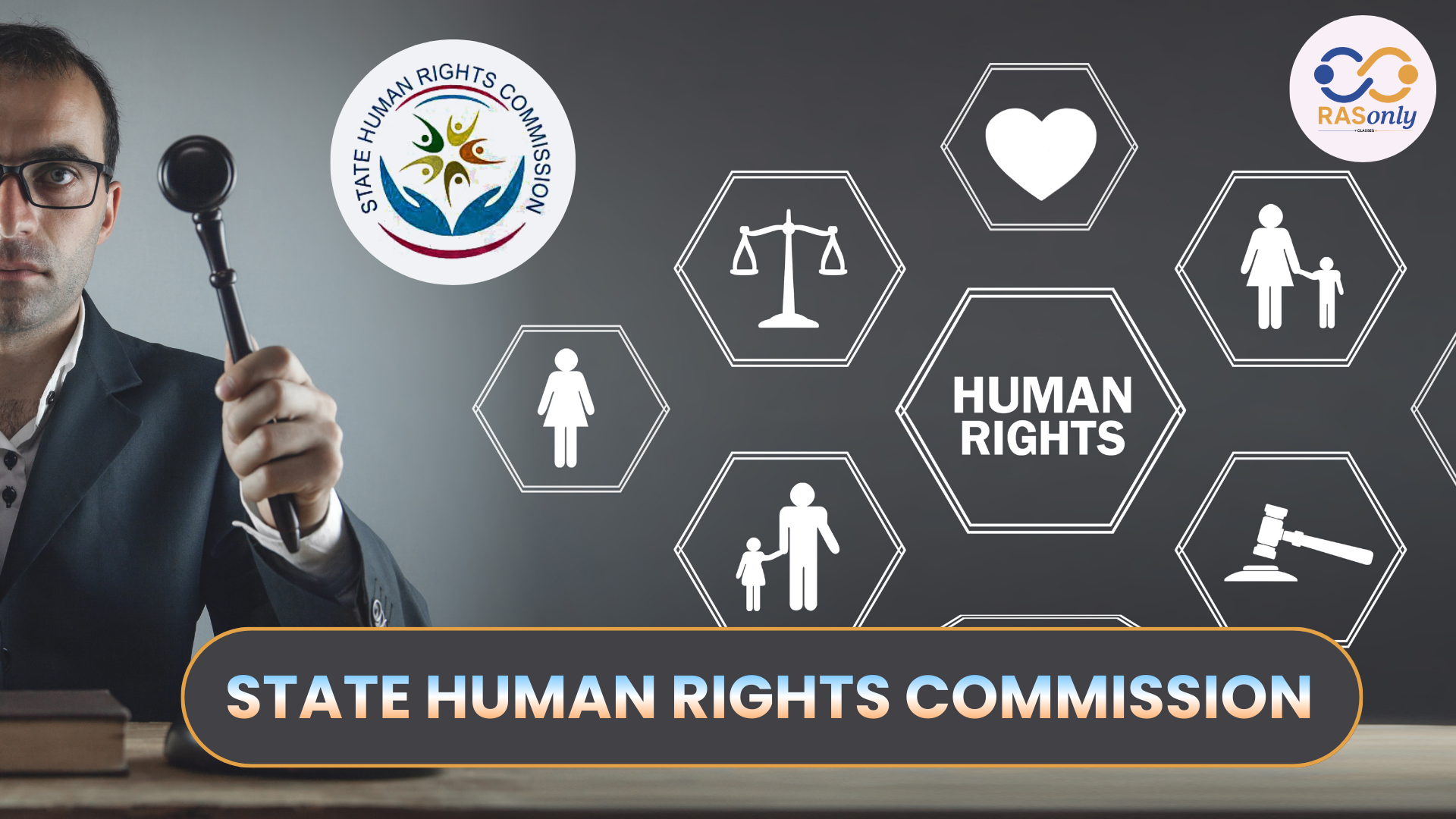How to Revise the Entire Syllabus Before the RAS Exam: A Complete Guide
- >
- RAS Preparation Resources
- >
- List of British Governors-General & Viceroys of India (1773–1950)
List of British Governors-General & Viceroys of India (1773–1950)


The list of British Governors-General & Viceroys of India deals with the influential figures in the formation of the country since colonial consolidation to independence. The list begins with the installation of Warren Hastings in 1773 as the first Governor-General of Bengal, representing more than 175 years of changing British domination. Every Governor-General and subsequently Viceroy of India was essential in administration and policy-making as well as fighting the resistance, and the legacy left by them shaped modern India.
Origins (1773–1833): From Bengal to India
The initial section of the List of British Governors-General and Viceroys of India started as the Governor-General of Bengal, formed to regulate the business of the East India Company. Significant reforms and territorial enlargements of rulers such as Hastings, Cornwallis, and Wellesley were based on the foundation of British domination over India.
- The 1773 Regulating Act established the Governor-General of Bengal.
- Warren Hastings (1773–1785): First Governor-General; judicial and administrative reforms.
- Lord Cornwallis (1786–1793): Introduced Permanent Settlement in Bengal.
- Lord Wellesley (1798–1805): The Subsidiary Alliance system expanded British territories.
- The 1833 Charter Act renamed the post to Governor-General of India.
Centralized Control (1834–1858): Governors‑General of India
In this step of the List of British Governors-General & Viceroys of India, the authority was now focused on the Governor-General of India. Social reforms, infrastructure, and annexations by leaders such as Bentinck and Dalhousie consolidated British rule and led to a backlash that ended in the 1857 revolt.
- Charter Act 1833: Created the Governor-General of India.
- Lord William Bentinck (1828–1835): Abolished sati; promoted English education.
- Lord Auckland: Led the First Anglo-Afghan War.
- Lord Dalhousie (1848–1856): Doctrine of Lapse, railway network, postal system.
- Policies led to widespread unrest, causing the 1857 Revolt.
British Crown Rule (1858–1947): Viceroys and Governors‑General
The Government of India Act 1858 replaced the East Indian Company rule with the British Crown after the revolt of 1857. During this time in the List of British Governors-General and Viceroys of India, Viceroys implemented colonial policy, presided over nationalist movements, and reacted to increased pressure for independence.
- 1858: Title changed to Viceroy & Governor-General of India.
- Lord Canning (1856–1862): First Viceroy after Crown rule began.
- Lord Curzon (1899–1905): Partition of Bengal; administrative reforms.
- Lord Chelmsford (1916–1921): Montagu-Chelmsford Reforms; Rowlatt Act.
- Lord Irwin (1926–1931): Simon Commission, Gandhi-Irwin Pact.
- Lord Mountbatten (1947): Oversaw independence and partition.
Dominion of India (1947–1950): Final Office Holders
In the final stage of the List of British Governors-General & Viceroys of India, India came to be recognised as a dominion within the British Commonwealth. Until the declaration of the Republic, the Governor-General continued as head of state, and C. Rajagopalachari was the only Indian to serve as such.
- 15 August 1947: India became a dominion; retained a Governor-General.
- Lord Mountbatten: First Governor-General of independent India (1947–1948).
- C. Rajagopalachari (1948–1950): First and only Indian Governor-General.
- 26 January 1950: Constitution adopted; Governor-General’s office abolished.
- Dr. Rajendra Prasad was sworn in as India’s first President.
Legacy & Impact
This List of British Governors-General & Viceroys of India shows the impact the colonial policies had in India. Their rule brought in railways, western education, modern administration, and laws-as well as social upheaval, economic exploitation, and a lot of aversion. Their contributions to current India are reflected in its political, legal, and social contours today.
- Established centralized administration, police, and civil services.
- Introduced railways, telegraphs, a postal system, and modern universities.
- Imposed exploitative revenue systems (e.g., Permanent Settlement).
- Policies triggered revolts and fueled the independence movement.
- Left a mixed legacy of modernization and colonial oppression.
Conclusion
The list of British Governors-General & Viceroys of India tells the story of India as an independent company, a Crown colony, and ultimately an independent country. By studying the policies of these officials and their effects, we can understand the colonial history of India and what built its modern system of rule.
FAQs
Post Category
- RAS Salary
- Result
- RAS Admit Card
- RAS Job
- RAS Cutoff
- Preparation Tips
- RAS Answer Key
- RAS Exam Analysis
- RAS Syllabus
- RAS Previous Year Papers
- RPSC RAS Exam Pattern
- RAS Interview
- RAS Mains Exam Date
- RAS Vacancy
- RAS Test Series
- RAS Best Books
- RAS Preparation Resources
- RAS Coaching Centre
- History
- Polity
- Geography
- Economics
- Science
- Art and Culture
- RPSC RAS Application Form
RASonly Interview Guidance Program

Mr. Ashok Jain
Ex-Chief Secretary Govt of Rajasthan
- IAS officer of the 1981 batch, Rajasthan cadre.
- Passionate about mentoring the next generation of RAS officers with real-world insights.
- Got retired in Dec 2017 from the post of Chief Secretary of the state of Rajasthan.

Mr. Guru Charan Rai
Ex-ASP / SP in Jaisalmer
- Guru Charan Rai, IPS (Retd), retired as Inspector General of Police (Security), Rajasthan, Jaipur in 2017.
- Served as ASP and SP in Jaisalmer, Nagaur, Sri Ganganagar, Sawai Madhopur, Dausa, Sikar, and Karauli.
- He also held key positions as DIGP and IGP in the Law and Order division.

Mr. Rakesh Verma
Ex-IAS Officer, B.Tech, MBA, and M.A. (Economics)
- IAS officer of the 1981 batch and retired in Chief Secretary Rank.
- Civil servant of high repute and vast experience.
- Has been teaching UPSC CSE subjects for the last six years.
Related Post
👉🏻 Register Today to Join Classes! 👍🏻
- Team RASOnly -
🎯 Benefits of RASOnly Coaching:
- ✅ 1:1 Mentorship with RAS Officers
- ✅ Experienced and Expert Faculty
- ✅ Free Library Access
- ✅ Daily Minimum 4 Hours Must
- ✅ Comprehensive Study Material
- ✅ Regular Tests & Performance Analysis
- ✅ Personalized Guidance & Doubt Solving
- ✅ Online & Offline Class Options
- ✅ Affordable Fees with Quality Education
Key Highlights:
- 👉🏻 3-Day Refund Policy
- 👉🏻 New Batch Starting from 04 August
- 👉🏻 Registration Amount: Only ₹1000





